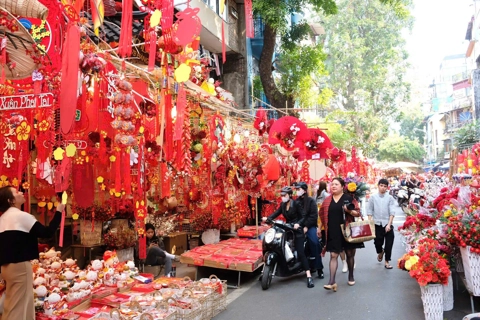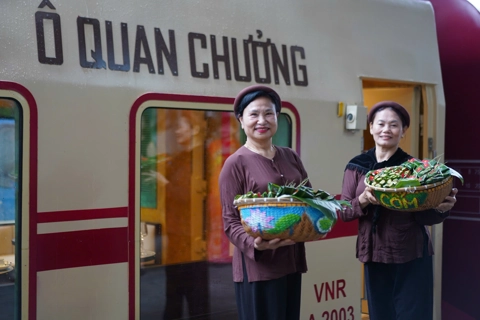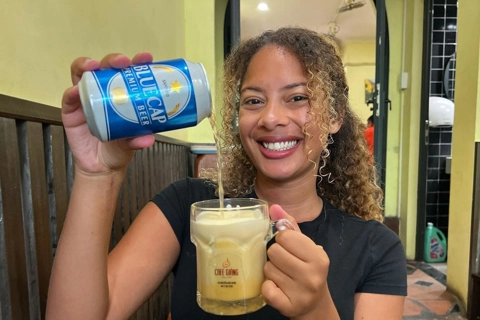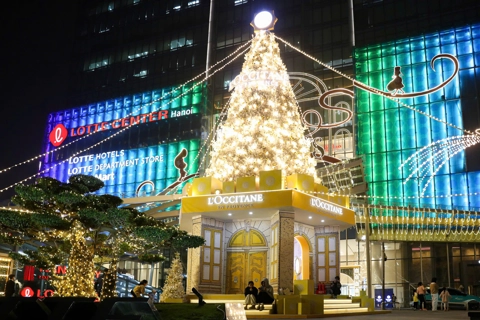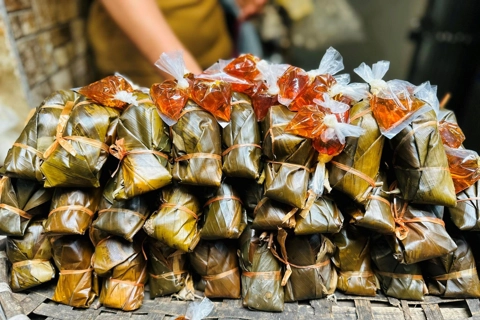Life
Vietnamese lions to roar again
Aug 27, 2014 / 01:33 PM
In the near future, foreign-style stone lions with fierce looks, large paws and sharp teeth are expected to be removed from relics, pagodas and temples throughout the country.
Cultural managers have decided that authentic Vietnamese guardian lion statues will replace these objects, which are unsuited to Vietnamese customs and culture. Soon, people will see Vietnamese stone lions roar again at the gates of ruins and heritage sites.

Duong Thi Thanh, vice director of the Ninh Binh Provincial Department of Culture, Sports and Tourism, said she will join with other cultural managers to raise the public's awareness about exhibiting Vietnamese sacred objects which carry with them the nation's history, traditional fine arts characteristics and spiritual symbols.
Thanh said she and her colleagues have positively responded to an official letter sent by the Department of Fine Arts, Photography and Exhibition (Ministry of Culture) which advised them not to encourage the displaying of non-Vietnamese symbols or objects.
Early this week, the letters were sent to cultural agencies across the nation, with photos of traditional Vietnamese sacred creatures, including lions and kylins made from wood, stone and ceramics.
These samples are from exhibits at the Viet Nam Museum of Fine Arts, Thanh Hoa Provincial Museum and Hue Royal Palace.
"The pure Vietnamese objects are very suitable to be exhibited at Vietnamese relics," Thanh said, "as they help create solemnity at these locations."
"It is consistent to display Vietnamese sacred objects at Vietnamese pagodas and temples," she added.
"We, cultural managers, have been concerned about the trend of displaying foreign style objects at Vietnamese relics for a long time, actually," Thanh noted.
"We determine to remove these foreign style objects from our spiritual sites, such as Bai Dinh Pagoda, UNESCO-recognised World Heritage Site of Trang An and temples of emperors Dinh Tien Hoang and Le Dai Hanh," said Thanh.
"We have tried to explain the meaning of using pure Vietnamese objects at relics to the managers and received their understanding," she said. "They have made a commitment to gradually remove foreign style objects."
"However, for guardian lions located in front of private buildings, we haven't developed a plan to convince the owners. Currently, we focus on objects displayed in public areas and national vestiges to protect the image of Viet Nam's heritage."
Based on the photos of sample objects provided by the Department of Fine Arts, Photography and Exhibition, craftsmen can manipulate Vietnamese lion and kylin statues, such as the centuries-old statues displayed at ruins.
Vi Kien Thanh, head of the Department of Fine Arts, Photography and Exhibition, said it would continue to collect illustrations of sacred objects that are purely Vietnamese.
He added that they would be placed on the department's official website at ape.gov.vn for public access.
"When the Ministry of Culture distributed a document warning agencies and individuals not to exhibit or use symbols or objects unsuited to Vietnamese customs and culture, we immediately received images and information of sacred Vietnamese symbols and objects sent from heritage researchers nationwide," he said.
"Thanks to their assistance, we now possess a stock of images of Vietnamese traditional sacred objects used in relics, temples and pagodas throughout the country," said Thanh.
"The public, and those creating objects for worship, can consult these images to understand Vietnamese symbols."
Fine arts researcher Tran Hau Yen The said the growing use of non-Vietnamese designs shows people's lack of knowledge and is a result of non-selective cultural adaptation.
"Chinese lions look fierce, angry and threatening, while Vietnamese lions look tolerant and solemn," he said.
Beside lions and kylins, he suggested that it is time to display nghe (fictional creature, lion-like head, long tail and dog-like body), and elephants in front of the gates of relics and buildings.
Thanh said she and her colleagues have positively responded to an official letter sent by the Department of Fine Arts, Photography and Exhibition (Ministry of Culture) which advised them not to encourage the displaying of non-Vietnamese symbols or objects.
Early this week, the letters were sent to cultural agencies across the nation, with photos of traditional Vietnamese sacred creatures, including lions and kylins made from wood, stone and ceramics.
These samples are from exhibits at the Viet Nam Museum of Fine Arts, Thanh Hoa Provincial Museum and Hue Royal Palace.
"The pure Vietnamese objects are very suitable to be exhibited at Vietnamese relics," Thanh said, "as they help create solemnity at these locations."
"It is consistent to display Vietnamese sacred objects at Vietnamese pagodas and temples," she added.
"We, cultural managers, have been concerned about the trend of displaying foreign style objects at Vietnamese relics for a long time, actually," Thanh noted.
"We determine to remove these foreign style objects from our spiritual sites, such as Bai Dinh Pagoda, UNESCO-recognised World Heritage Site of Trang An and temples of emperors Dinh Tien Hoang and Le Dai Hanh," said Thanh.
"We have tried to explain the meaning of using pure Vietnamese objects at relics to the managers and received their understanding," she said. "They have made a commitment to gradually remove foreign style objects."
"However, for guardian lions located in front of private buildings, we haven't developed a plan to convince the owners. Currently, we focus on objects displayed in public areas and national vestiges to protect the image of Viet Nam's heritage."
Based on the photos of sample objects provided by the Department of Fine Arts, Photography and Exhibition, craftsmen can manipulate Vietnamese lion and kylin statues, such as the centuries-old statues displayed at ruins.
Vi Kien Thanh, head of the Department of Fine Arts, Photography and Exhibition, said it would continue to collect illustrations of sacred objects that are purely Vietnamese.
He added that they would be placed on the department's official website at ape.gov.vn for public access.
"When the Ministry of Culture distributed a document warning agencies and individuals not to exhibit or use symbols or objects unsuited to Vietnamese customs and culture, we immediately received images and information of sacred Vietnamese symbols and objects sent from heritage researchers nationwide," he said.
"Thanks to their assistance, we now possess a stock of images of Vietnamese traditional sacred objects used in relics, temples and pagodas throughout the country," said Thanh.
"The public, and those creating objects for worship, can consult these images to understand Vietnamese symbols."
Fine arts researcher Tran Hau Yen The said the growing use of non-Vietnamese designs shows people's lack of knowledge and is a result of non-selective cultural adaptation.
"Chinese lions look fierce, angry and threatening, while Vietnamese lions look tolerant and solemn," he said.
Beside lions and kylins, he suggested that it is time to display nghe (fictional creature, lion-like head, long tail and dog-like body), and elephants in front of the gates of relics and buildings.

